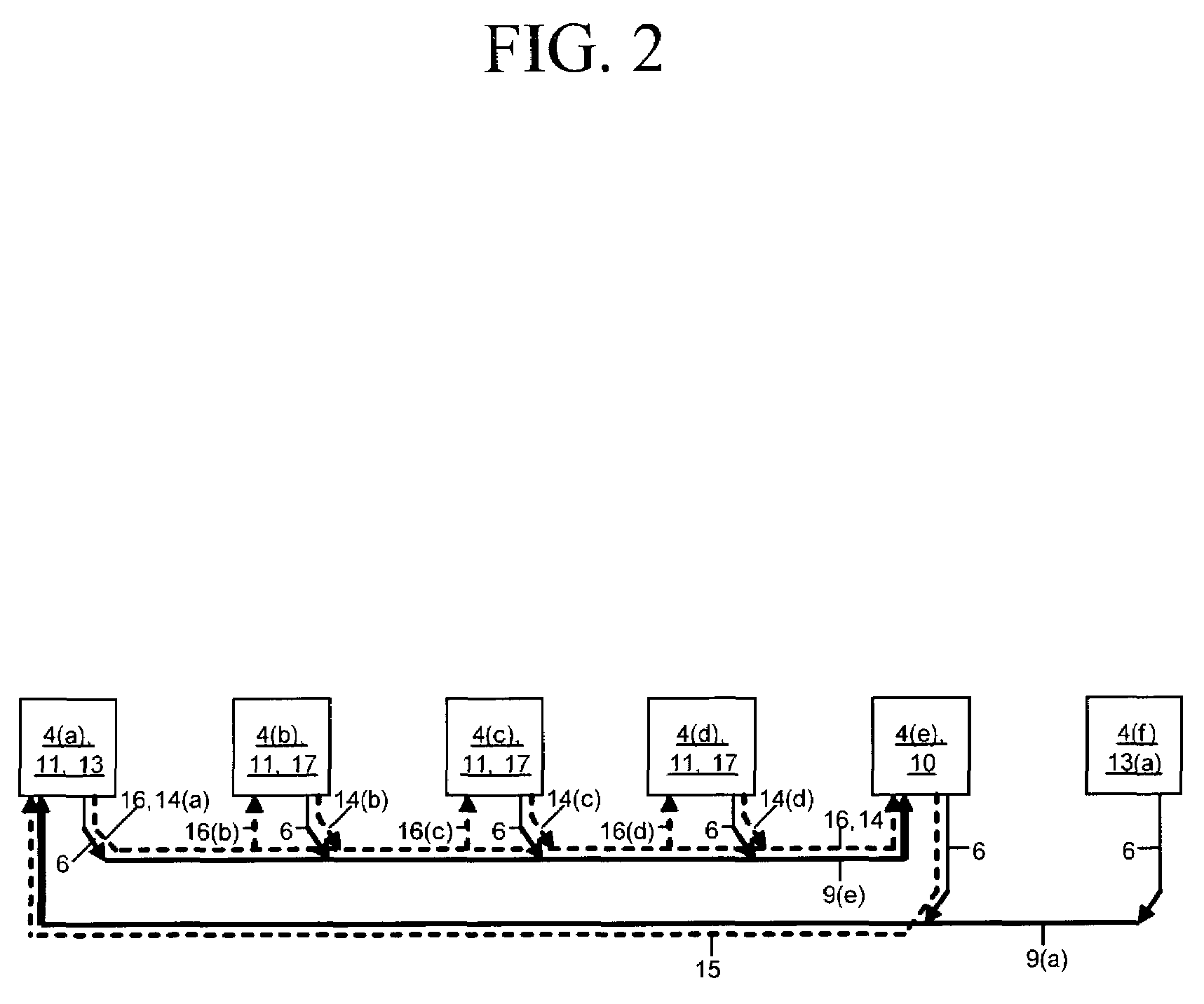Dynamically channelizable packet transport network
a dynamic channel and packet transport technology, applied in the field of packet transport networks, can solve the problems of inefficient dedicated point-to-point link network architecture, inefficient bursty packet traffic, and inability to carry other potential billable traffic, so as to achieve the network capacity utilization efficiency of packet-layer, reduce the cost of deploying and operating the network infrastructure, and reduce the effect of total network capacity usag
- Summary
- Abstract
- Description
- Claims
- Application Information
AI Technical Summary
Benefits of technology
Problems solved by technology
Method used
Image
Examples
Embodiment Construction
[0032]The invention is described herein first by illustrating the novel concepts via a more detailed discussion of the drawings, and then by providing specifications for a currently preferred embodiment of the invention.
[0033]Symbols and notations used in the drawings:[0034]Lines and arrows between nodes, the nodes drawn as boxes, in the drawings represent a logical communication path, and may physically consist of one or more physical wires. When no direction is indicated, a line between nodes or boxes in the network diagrams presents a two-directional communication path.[0035]Solid arrows indicate a communications signal i.e. data traffic flow. Gapped arrows indicate control information flow.[0036]Bold lines indicate bussed communication paths, i.e. communication paths shareable by traffic flows from either various sources or to various destinations within the reach of the bus.[0037]Lines or arrows crossing in the drawings are decoupled unless otherwise marked. Arrows ending into ...
PUM
 Login to View More
Login to View More Abstract
Description
Claims
Application Information
 Login to View More
Login to View More - R&D
- Intellectual Property
- Life Sciences
- Materials
- Tech Scout
- Unparalleled Data Quality
- Higher Quality Content
- 60% Fewer Hallucinations
Browse by: Latest US Patents, China's latest patents, Technical Efficacy Thesaurus, Application Domain, Technology Topic, Popular Technical Reports.
© 2025 PatSnap. All rights reserved.Legal|Privacy policy|Modern Slavery Act Transparency Statement|Sitemap|About US| Contact US: help@patsnap.com



